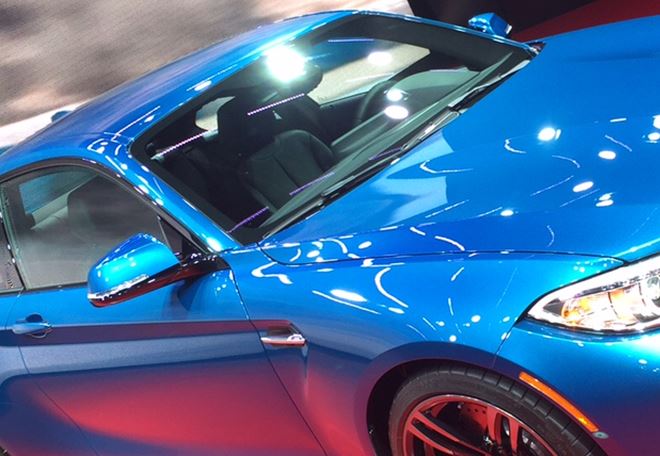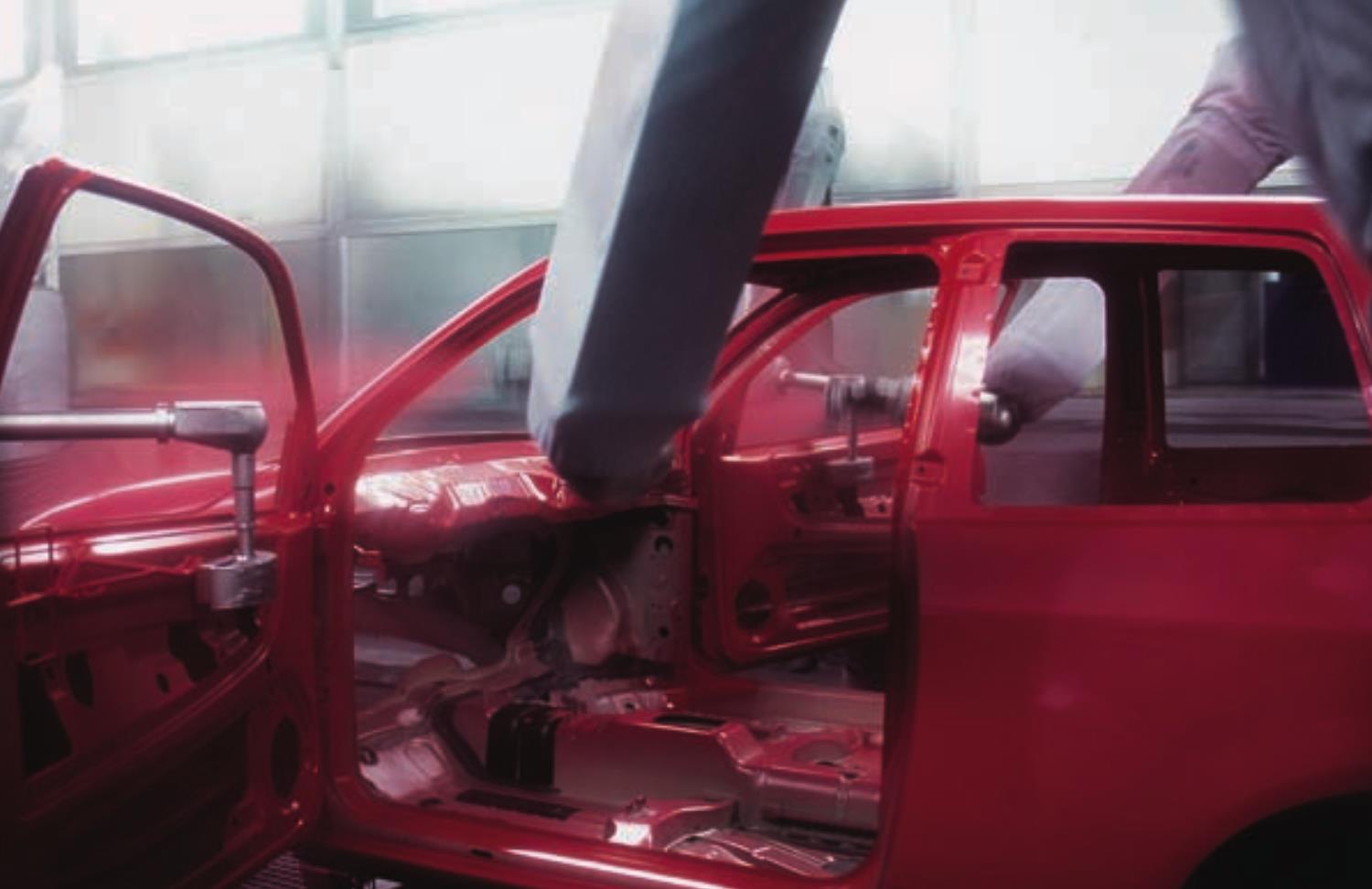According to autolist.com, over 80% of cars produced today are white, black, or some shade of gray. It’s not necessarily because bright and bold colors are more difficult to produce and match than their grayscale counterparts, they just take longer to get through the inspiration and car design process.
Believe it or not, producing a new auto color can take up to five years before it makes it to the showroom floor. It’s a long, tedious process for designers, paint companies, and auto manufacturers, but innovative color measurement technology is changing the game and reducing time to market.
Moving from Inspiration to Production of New Car Colors
Inspiration for future auto colors can come from just about anywhere – architecture, nature, Pantone Color of the Year, even the Paris Fashion Show. However, it’s not as simple as choosing a bright red poppy flower from the park or a muted yellow scarf from the runway and putting the color on a car.
Designers use inspiration as a starting point, then must consider:
- How will the proposed color look under different lighting conditions? Will a muted yellow look like Dijon mustard under showroom lights.
- How will special effects like pearlescent and metallic flakes affect the color and appearance? Will consumers want to purchase it?
- Does the color inspiration align with what suppliers have to offer through their pigments, dyes, and colorants?
What Do Customers Want to Buy?
Customers pay for unique colors. That’s what the car manufacturers want to see, and what color and appearance designers must deliver. Once a design color is selected, the automotive manufacturer works closely with the paint suppliers to figure out how to create the color and how it will look in production.
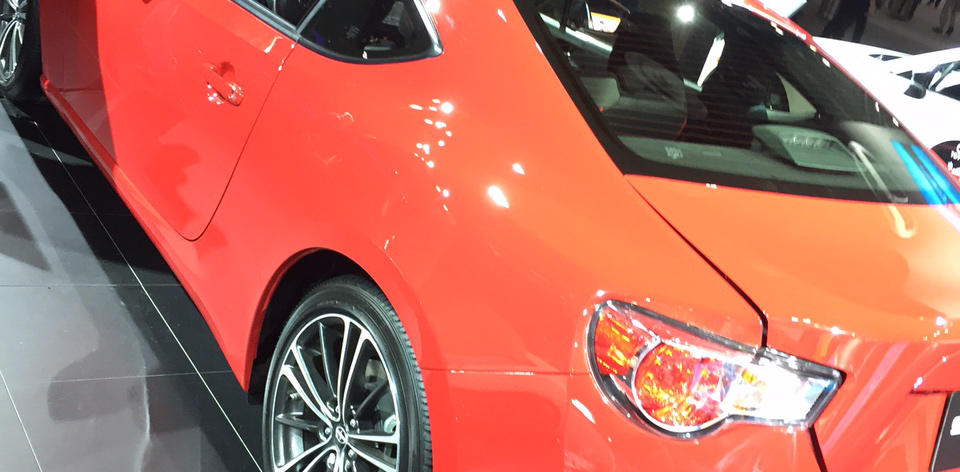
Aluminum flakes, which make cars appear lighter or darker based on angle of vision, were among the first special effect colorants. Today, 3D micas can make paint appear to change color, like the coating on this car, which appears red or orange depending on angle of vision.
How Do Formulation and Approval Work?
Formulating paint color is not easy, and it can take months to get it right.
Using trial and error, the paint company mixes and remixes pigments, dyes, and special effect colorants. Once a formula is appealing, they prepare a standard to submit to the auto manufacturer. This isn’t a swatch on a square of cardboard; it’s an actual car panel that has been sprayed and cured just as the car will be, with a base coat, an interference coat like mica in the middle, and a clear coat on top.
In most cases, that first sample is not accepted – it may need more green, more gloss, more special effects – and it’s back to the drawing board for a new formulation and creation of a new sample. This cycle can recur several times.
Once the paint company gets approval on a small panel, they submit a larger panel or even spray an entire car to show what the color will look like in the real world. Testing the formula on larger surfaces allows designers to see how the color and finish will appear under different lighting conditions and from different angles. In some cases, a color might look great on a small panel, but not on the curves of a real car.
It’s a tedious process and can last for months, even years, until the auto manufacturer is satisfied that the color appearance is the best it can be.
Why Are Auto Manufacturers So Picky?
When you’re mass-producing parts for thousands of cars in different plants, the coating must be perfect. If the parts don’t match during final assembly, the car will be rejected. Due diligence during the color and appearance formulation stage is important to keep production costs down. After all, getting the colors right is just as important as getting the right colors.
How Can Technology Help?
Metallics, pearlescent, and other complex finishes are beautiful, but they’re a challenge to control. How do you quantify the amount of shimmer or reflectance of a special effect coating? Luckily for auto manufacturers and paint labs, color measurement technology has come a long way in fully characterizing extreme effect finishes.
Characterize Effect Finishes With a Multi-Angle Spectrophotometer
With an on-board color calibrated RGB camera for imaging and 12 angles of measurement, the MA-T12 handheld multi-angle spectrophotometer can quickly and accurately evaluate the color, sparkle, and coarseness characteristics of extreme effect finishes with the highest level of repeatability and reproducibility. The centrally located aperture with positioning pins ensures measurement stability on samples, while modern touch screen navigation, live camera measurement previews, and on-screen pass-fail indication can easily analyze color and appearance.
Establish Strict Color Standards and Global Tolerances with Quality Control Software
EFX QC software incorporates reusable digital assets, such as standards, tolerances, jobs, and more, as well as job templates and standardized procedures for intuitive measurement and data analysis. It also offers visual tools like performance trend charts and stored images of specific measurements for real-time performance monitoring and actionable insights to troubleshoot out-of-tolerance color.
Create Virtual Materials Using Spectral Data
With the PANTORA desktop application, you can quickly measure nearly any material, including paint, plastic, fabrics, meshes, and more with a device like the MA-T12 and digitize the appearance aspects like flake, texture, and color flop. PANTORA stores digital materials in an AxF file format to manage, view, and edit from a centralized location. It also connects digital material input sources with output destinations such as third-party 3D rendering software and Product Lifecycle Management (PLM) Systems, so stakeholders can see product designs with realistic color and appearance attributes for faster, more sustainable reviews and approvals.
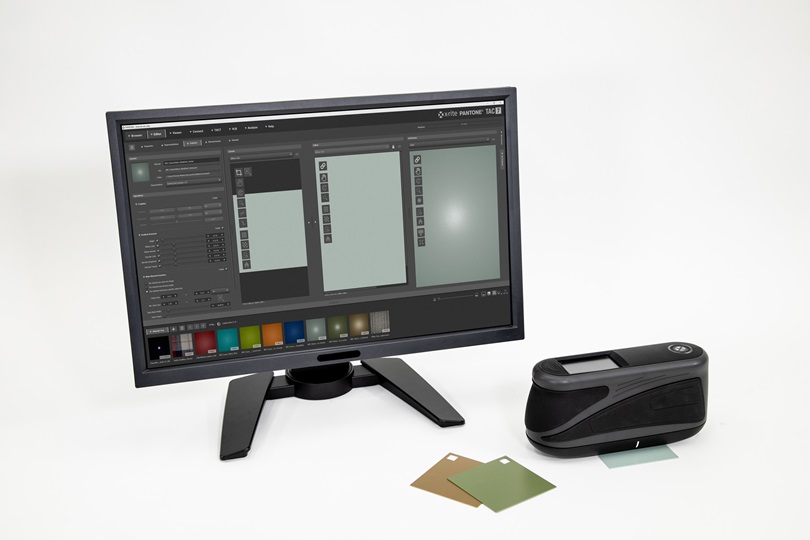
Evaluate Color and Appearance Under Multiple Light Sources
From inspiration through production, lighting is very important in the automotive industry. Light booths, like X-Rite’s SpectraLight QC can be used during the early formulation stages to ensure the color and special effect coatings look as they should under daylight, moonlight, incandescent garage light, and fluorescent showroom light. Designers paint small panels that mimic car parts and set them inside a light booth to evaluate how the appearance changes under different light sources.
When it’s time to evaluate how a coating will look on an entire car, you need something bigger. Much bigger. Harmony Rooms are customized lighting evaluation rooms with luminaries mounted throughout the ceilings and sometimes the walls. Once the vehicle is painted, they drive it inside, flip on the lights, and see how an entire car looks under multiple lighting conditions.
Harmony Rooms allow quality controllers to ensure all panels match, and the finish remains consistent under any light source, from dawn, to dusk, to the showroom floor.
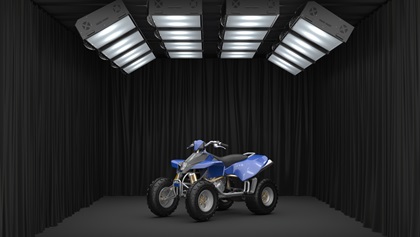 |
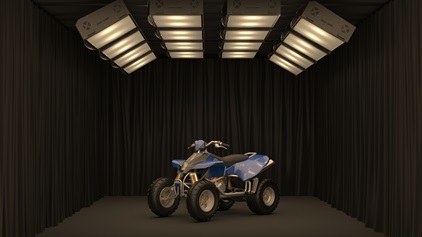 |
| Illuminant D65 (Daylight) | Illuminant F11 (TL84) |
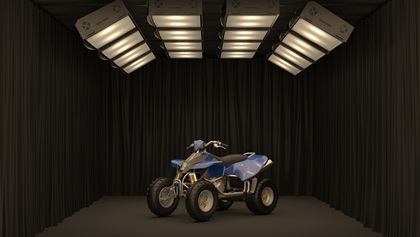 |
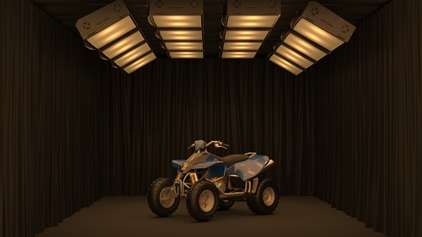 |
| Illuminant F2 (Fluorescent) | Illuminant A (Incandescent) |
Since X-Rite Harmony Rooms are fit with hanging or mounted SpectraLight QC luminaires, the visual evaluation program remains consistent with parts viewed inside a SpectraLight QC light booth.
Be First to Market With Innovative Materials
Visit our website to learn how X-Rite’s portfolio of state-of-the-art color measurement solutions can help you achieve the complex effect automotive finishes and intricate designs that customers demand faster than traditional methods.
Browse our industry pages for:
- Automotive Manufacturers
- Automotive Designers
- Automotive Part Suppliers
- Transportation Manufacturers
Browse our application briefs to learn how to:
- Evaluate Special Effect Automotive Parts
- Evaluate Special Effect Paint on the Assembly Line
- Measure Metallic and Special Effect Automotive Finishes
- Visualize the Color and Appearance of Paints and Coatings
- Visualize Fine Texture Fabrics Without Prototypes
Watch our on-demand webinars to learn how to:
- Capture and Use Appearance Data for Automotive Paint
- Choose the Right Tolerance Method
- Define a Realistic Pass/Fail Tolerance
- Digitize Your Brand Standards
- Characterize Effect Finishes
